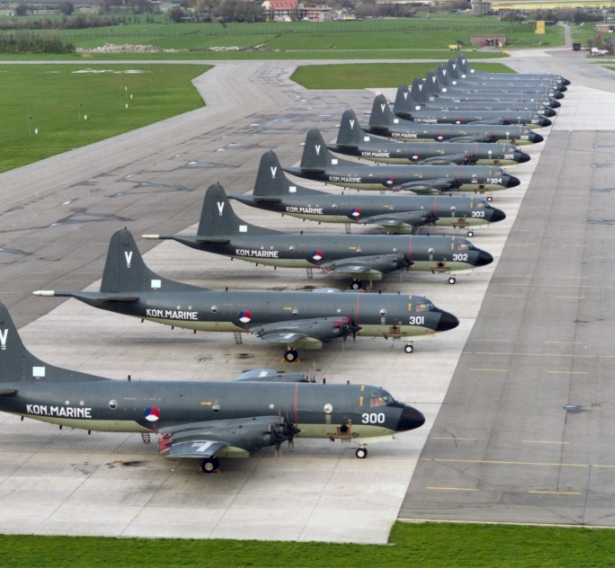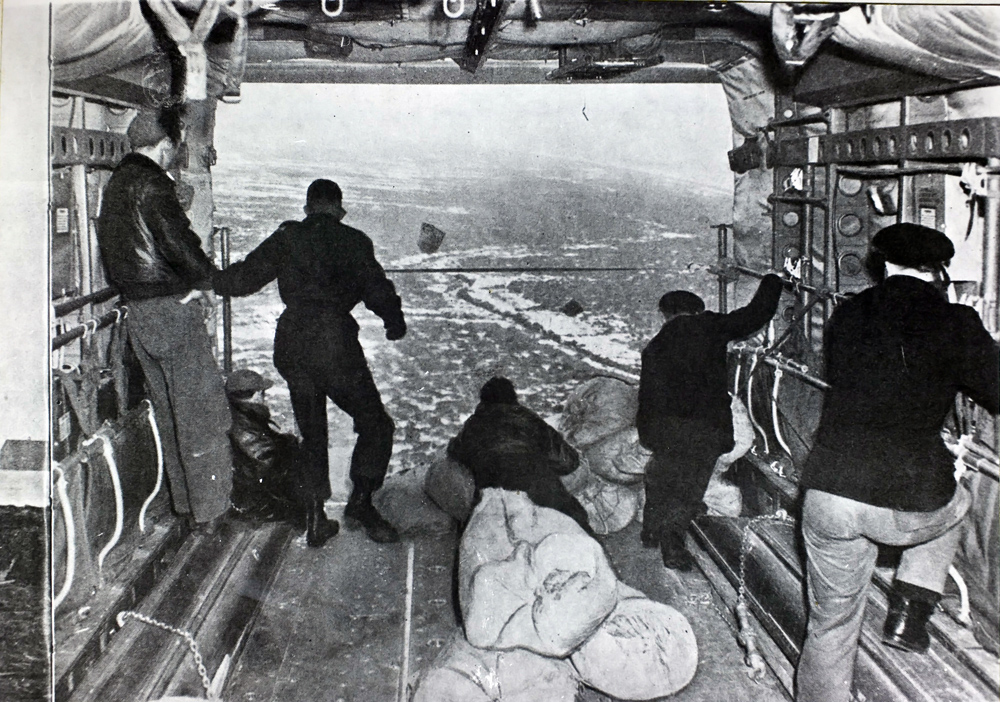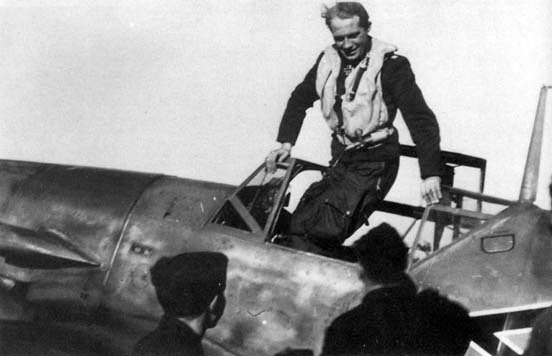Operation Chowhound: B-17s over Valkenburg
The food drops over Holland in April and May 1945 are mainly known as Operation Manna, but that was the name of the British share. The Americans had their own operation: Chowhound.
The iconic photo of the B-17 Flying Fortress that drops packages with food proves that the Americans have been above Valkenburg airbase. That happened on May 1. In the background the well-known barracks and the Katwijk water tower. The special action of the Allies saved the lives of thousands of people. At that time, the ‘Hunger Winter’ had already claimed some 20,000 victims and, even with liberation in sight, there would have been many more.
Manna and Chowhound were preceded by intensive negotiations. The fact that the Dutch in occupied territory suffered from the Hunger Winter had not gone unnoticed in England. Queen Wilhelmina and Prince Bernhard pressed for help, the Queen with American President Franklin Roosevelt and the Prince with his military contacts in London. Successfully. Shortly before Roosevelt’s death on April 12, he and Churchill decided that something had to be done quickly for the starving Dutch.
General Eisenhower was given permission to contact Reichskommissar Arthur Seyss-Inquart and negotiate a ceasefire. Knowing that the war was over and that he was facing trial, the German quickly agreed to negotiate. He didn’t even bother to consult his leader in Berlin. His complacency in this matter did not save him, however.
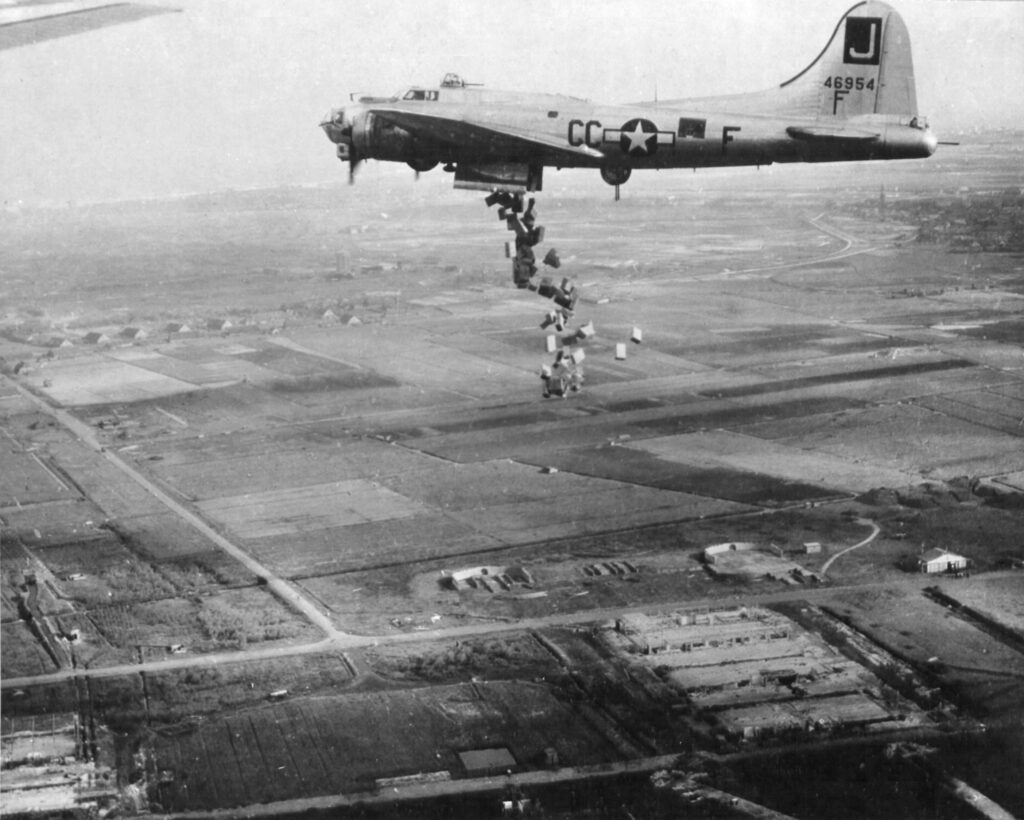
Ceasefire
In mid-April, two weeks before the negotiations were to take place, plans were already being made in England for the food flights. Since there were not enough transport aircraft, it was decided to release hundreds of RAF and USAAF bombers.
The necessary (temporary) truce was arranged on 28 April during a secret meeting between the Allies and Germans in the town of Achterveld near Amersfoort. Prince Bernhard was also present. The approximately 120,000 German troops in the western Netherlands would not fire at the low-flying enemies as long as they adhered to the agreed routes.
The agreement still had to be formally signed by Seyss-Inquart, but that only happened on May 1, a day after Hitler committed suicide. Fortunately, Eisenhower did not wait for the governor’s signature and started the droppings on April 29 (the weather was too bad on the 28th and the planes were grounded). It is therefore not surprising that the crews were not reassured during the first days! To test the ceasefire, two RAF Lancasters first flew to Duindigt horse racing track (north of The Hague) on 29 April to drop off food. The crews saw all the Flak pointed at them, but they returned to England without holes in their planes. Then the operation could really start.
Fog
The RAF began Operation Manna on April 29, the Yanks did not launch until May 1. That could not be otherwise, because the Americans were kept on the ground by fog for the first few days. Their airfields were closer to the North Sea coast than those of the RAF. On May 1, 394 B-17s took to the air for a flight along the drop zones, including Valkenburg. An impressive number, but remember that an attack on Germany was flown by as many as 800 or 1000 B-17s.
Usually the bombers flew over the Netherlands as quickly as possible and at at least 20,000 feet. Now they flew at a speed of 150 to 175 knots and at 400 feet between the anti-aircraft defenses. Faster and higher was not possible, because then the food packages would explode. No parachutes were used, the bags and boxes were unloaded by opening the bomb bay.
With the help of Dutch civilians, the Germans had ensured that the drop zones were clearly marked with white crosses. Nevertheless, the RAF used Mosquitos to mark targets. According to eyewitnesses, the British adhered neatly to the drop zones, but the Americans dropped their loads right there when they saw people.
The American cargo consisted of so-called K-rations, which are rations for one soldier for one day. The box contained a breakfast, lunch and dinner consisting of, among other things, canned meat, milk, cheese, bacon, sugar, salt, instant coffee, chocolate, cigarettes and chewing gum.
There were great risks associated with the operations. Would the Germans keep to the bargain or was it perhaps all a trap? If the Germans opened fire, there would be a massacre of the bombers and Chowhound and Manna would become arguably the most disastrous operation of the war. Conversely, the occupiers were afraid that the planes would not drop food, but paratroopers, or weapons for the resistance. The dropped loads were therefore randomly checked before they were handed over to the Dutch.
The operation was very successful and without major incidents. Still, the planes were shot at. Not by the deadly anti-aircraft defenses, but with the light weapons of the Germans who could hardly take their loss. Some bombers returned to their base with bullet holes. The Allied planes could not fire back because there was no ammunition on board. Some bombers were lost, but that was due to accidents.
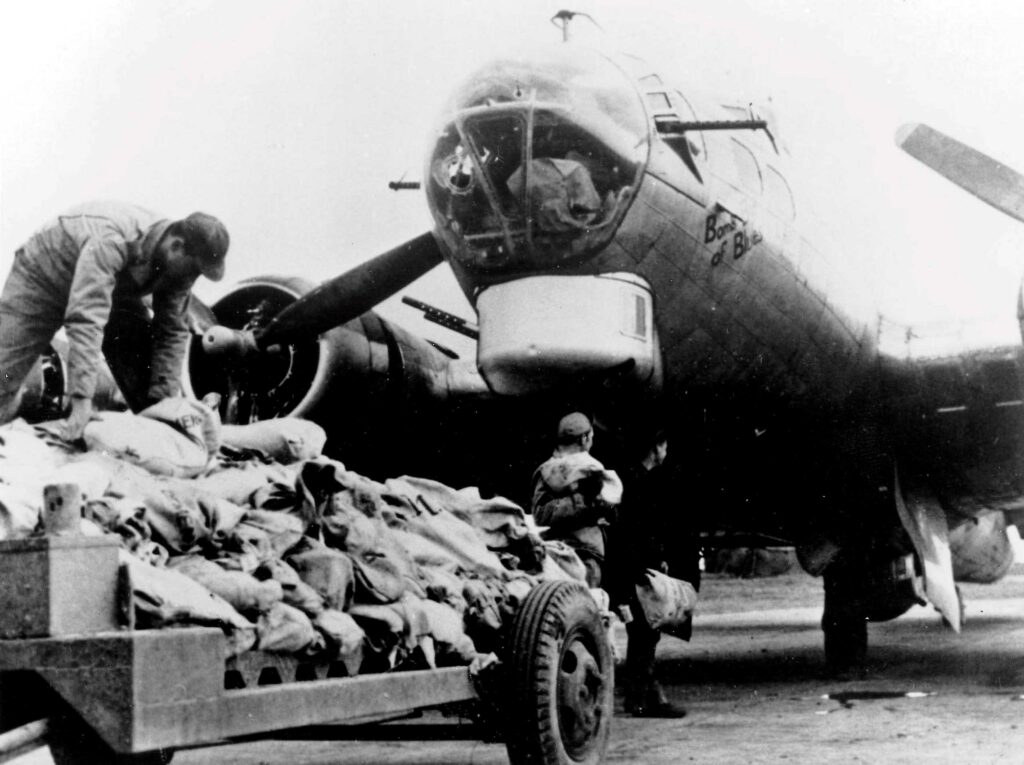
Special experience
For the American crews, the food flights were a very special experience. The men of the Eighth Air Force had a very short life expectancy: about 15 missions on average, but they were required to fly 25 missions. More than half of all USAAF crews who died during the war were from the Mighty 8: 26,000.
And now they were allowed to drop food instead of bombs, saving people instead of killing people. The most beautiful bombing they’d ever carried out. And that without being shot at. When the men came to the reunion at Valkenburg Vliegkamp in 1985, after 40 years, and were honored, many tears were shed.
Gunner Bernie Behrman of the 390th Bomb Group described how he experienced the flight afterwards. “The purpose of the mission was Valkenburg airbase. We had no trouble finding the field. There was no anti-aircraft resistance. As I turned for the drop, I could see German soldiers on watch. We dropped the food. Some packages got stuck on the attachment points, but that was no problem. We closed the bomb doors and returned home with a good feeling. The crew on board was a war crew who had a part in blowing things up. After all those destruction flights, we had a very good feeling about this mission. I think the bombers flying low over the drop zones at 150 to 175 knots must have boosted the morale of the people on the ground.”
In addition to B-17s from the 390th Bomb Group, 40 aircraft from the famous 100th Bomb Group (‘the Bloody Hundredth’) flew to Valkenburg on 1 May. The report describes how that went: “The bombing was done in squadron formation. The approach went well, but the target was hard to see until the planes were almost directly overhead. Several bomb aimers reported that the white cross was not in the expected location. The wind was from the north and the bomb aimers had to point slightly against the wind to compensate. All aircraft reported good results, the boxes hit the target area. Some boxes got stuck because the hold was so full. The flight engineer and radio operator were told beforehand how to push the boxes out. 37 aircraft dropped their cargo on the designated target. The altitude for all squadrons was 400 feet.”
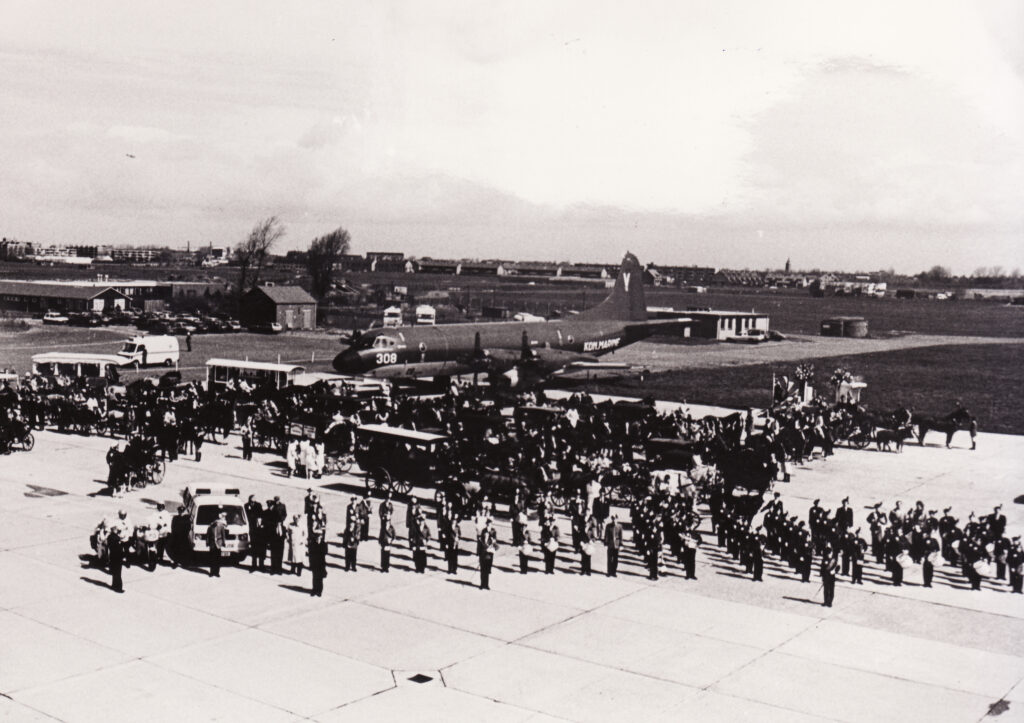
Chowhound lasted from 1 to 8 May. The Flying Fortresses made 2,268 flights and dropped 3,770 tons of food. The RAF’s contribution was greater: from April 29 to May 7, Lancasters and Mosquitos unloaded 7,142 tons of food on 3,300 flights.
Sources a.o.:
- operationmanna.secondworldwar.nl
- history.com
- 390th.org
- 100thbg.com


